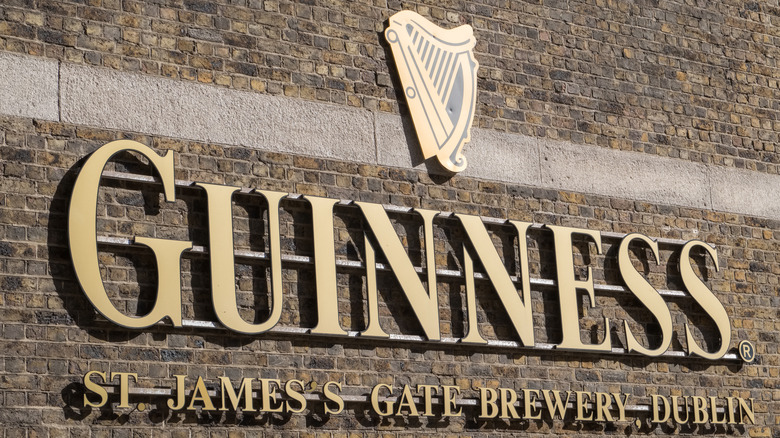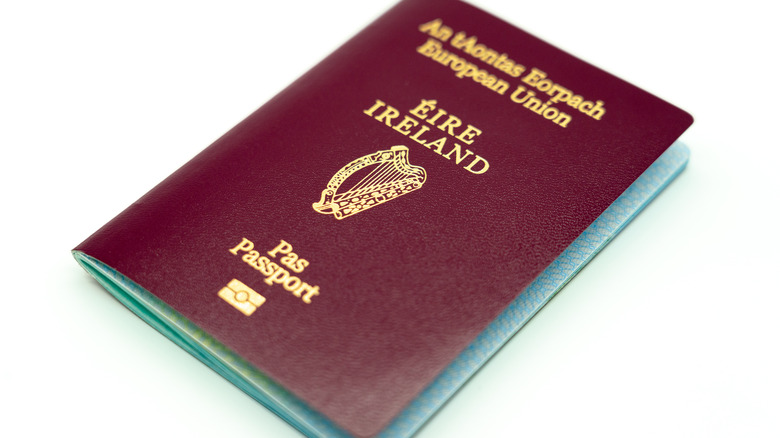The Story Behind The Guinness Harp
Founded in 1759, Guinness is not only among the oldest alcohol brands in the world, but the most recognizable: the golden Guinness harp is probably one of the best-known logos in the wide world of beer and dry stout. The image of an ornate, golden harp has adorned Guinness products since 1862, when the company first claimed the harp as its official trademark (via Irish Central). But what does the Guinness harp refer to –– and why does it look so much like the symbol of the Government of Ireland?
The answer can be found in Trinity College Dublin, in the Long Room Library. There you will find the "Brian Boru Harp" (also known as the O'Neill Harp), a rich piece of Irish history dating back centuries –– and one of only three remaining medieval Irish harps. Brian Boru was a 10th century Irish king celebrated for his patronage of the arts. Although the harp preserved at Trinity College is not, in fact, contemporary with Boru, it is strongly associated with the Irish king. After being gifted to the Pope by Boru's son in 1064, the harp began an over 700-year journey around Europe and England, finally settling in Trinity College in 1782, where it remains to this day (via Trinity College Dublin). The harp's alternate name, the "O'Neill Harp," refers to Arthur O'Neill, a blind harpist of the 18th century who is said to have tuned the harp and played it in a parade through the city of Limerick.
How the Irish government flipped the script
Tapping into this deep part of Irish history, Arthur Guinness decided to use an image of the Boru/O'Neill harp on his trademark label in 1862 (in addition to the other two iconic Guinness devices: the "Guinness" name and Arthur Guinness' signature). As Irish Central details, the symbol was legally registered in 1876. About 50 years later, when the Irish Free State Government settled on the Boru/O'Neill harp for its own official emblem, it was impeded by Guinness' trademark. In a clever sidestep, however, the Irish Government reversed the orientation of its harp symbol, presenting, effectively, a mirror image of the Guinness harp –– but now a legally sound trademark.
To this day, the Boru/O'Neill harp is still the emblem of the Government of Ireland. The current version of the Guinness harp, meanwhile –– a simplified image with fewer lines (and fewer strings on the harp) –– was introduced in 2005 (via Irish Central). Tied to both Ireland's governing body and to one of Ireland's oldest, best respected companies, the Boru harp remains a rich part of Irish culture.

